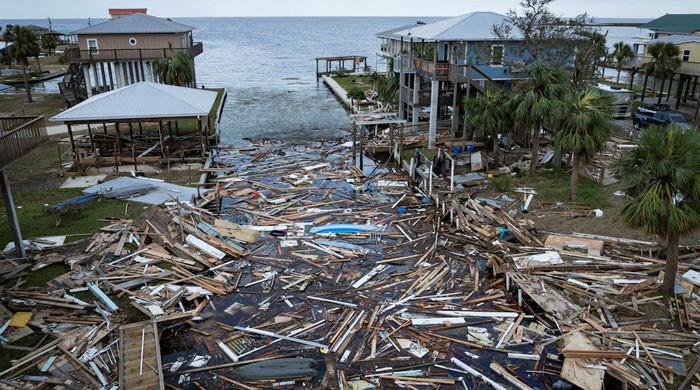Washington: The United States is expected to face a stronger and more dangerous hurricane season this year, with more powerful storms likely to strike.
But as the risk increases, the Trump administration reduces jobs and financing the main meteorological and climate agency in the country, – National Ocean and Atmospheric Administration of the United States (NOAA). Experts warn that these cuts could make storms more difficult and protect people in time.
The NOAA predicted a more intense Hurricane of the Atlantic Hurricane on Thursday.
The NOAA provides a 60% chance of a season greater than normal, with between 13 and 19 storms named with winds of 39 MPH (63 km / h) or more.
Among these, six to 10 should become hurricanes with winds of 74 MPH or more, including three to five major hurricanes classified as categories three, four or five, with sustained winds of at least 111 mph.
There is also 30% chance of an almost normal season and 10% chance of a season less than normal, the agency said.
The administration also seeks to dismantle the Federal Emergency Management Agency (FEMA), calling for closure and its functions, instead of individual states.
FEMA’s actress manager Cameron Hamilton – who was appointed by the Trump administration – was dismissed earlier this month after having said that the elimination of the agency was not “in the best interest of the American people”.
Reheat the oceans
The forecast cites a confluence of factors: neutral conditions in the climatic scheme of the El Niño – Southern (ENSO) oscillation, oceanic temperatures warmer than the average, the predictions of the shear of the weak wind and an increased activity of the West monsoon – the starting point of Atlantic Hurricane.
“As we saw last year with significant interior floods from Hurglans Helene and Debby, the impacts of hurricanes can reach far beyond coastal communities,” said the interim administrator of the Noaa, Laura Grimm, in a press release.
“The NOAA is essential for the delivery of early and precise forecasts and warnings, and provides the scientific expertise necessary to save lives and goods.”
But Rick Spinrad, the former NOAA administrator, told AFP that he was deeply concerned about the agency’s ability to respond to the follow-ups of meteorologists, technicians and other key staff, led by the so-called “Elon Musk government department”.
“I am concerned about the possibility of piloting the plane, managing the models, responding to the phones while these storms start to postpone in the country – at the same time as the meteorological service will face tornadoes, forest fires, floods, extreme precipitation,” said Spinrad.
Seawater temperatures have been increasing for decades due to the combustion of fossil fuels, added Spinrad. “It is therefore not a surprise, and undoubtedly, climate change has contributed to some of the temperatures of the ocean which are a major factor in this forecast.”
President Donald Trump seeks to reduce the NOAA research operations budget by $ 1.3 billion next year. Project 2025 – The conservative plan that the administration uses to guide its agenda of the second mandate – qualified the agency a key engine as “climate alarmism”.
Last year, five storms that were large enough to have received names caused economic losses exceeding a billion dollars, adjusted for inflation, according to the NOAA.
The deadliest of these was Helene, responsible for 250 American deaths – the most since Hurricane Katrina in 2005.
The Trump administration announced earlier this month that it will stop updating its database in the event of a billion dollars, which for 44 years illustrated the increase in the cost of climate destabilization.




